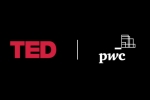
This report is a joint survey by PwC and the Urban Land Institute. Now in its 19th edition, the survey provides an outlook on real estate throughout Europe for the near-term and 2022. As European economies have started to recover from the pandemic, there is a clear upturn in confidence among property industry leaders although many are still coming to terms with the radical changes to the business of real estate brought about or accelerated by COVID-19.
Industry leaders draw comfort from the strength of economic growth across much of Europe following government and central bank support measures. As a result, business confidence and profitability expectations have recovered to pre-COVID levels.
Such confidence is further supported by continuing strong investor demand. Debt and equity are expected to be plentiful although there are clearly big differences between sectors that performed well during the pandemic and those that suffered significantly.
But with a society and real estate industry that have limited experience of coming out of a pandemic and what “restarting the economy” really means, there continues to be volatility and uncertainty.

COVID-19’s role as a trend accelerator – highlighted in last year’s survey – has hardened into fact. Alongside this, its impact on supply chains and labour mobility have translated into very real, rising construction costs, just at a time when property professionals are trying to catch up on delayed developments or push repurposing initiatives. The importance of ESG matters has crystallised in the wake of the pandemic, gaining renewed urgency.
While the residential sector continues to appeal to the industry due to its defensive fundamentals, investors are aware that housing remains a political hot potato. Elsewhere, logistics retains its lustre as a pandemic winner, while the appealing income profiles of data centres, new energy infrastructure and life sciences all underline the continued enthusiasm around alternatives and operational real estate.
Perhaps unsurprisingly, the survey confirms that the hegemony of offices and retail is over in terms of allocations, whereas there is a feeling of “wait and see” around the office sector, with some respondents enthusiastic about the future of flexible, prime assets, while others envisage an inevitable contraction in overall demand. Whatever happens, the question over the future of office demand is unlikely to be confined to tenant and employee preferences.
The survey reveals that the location of assets may become crucial, with regional cities in continental Europe having been less adversely affected by fluctuations, during the pandemic.
The positive outlook in this year’s Emerging Trends in Real Estate® Europe reflects a sense that there is “light at the end of the tunnel”. The interviews and survey, which were conducted between July and September, relay 12 months of measured success despite continued lockdowns and travel restrictions. For most respondents, the best is yet to come.
“It’s one of the most interesting times in my career to be investing. It’s the first cycle I’ve been in where there’s a huge disparity between different parts of the real estate market.”
“Inner cities are fully developed, so repurposing will be important. This also fits into the ESG focus as it is more sustainable to refurbish than buy new” suggests one Nordic Developer.
With effective vaccines against COVID-19 available across Europe, the prospects for real estate are brighter as its countries and cities reopen for business. But while the general outlook has improved, some markets – particularly those more reliant on tourism – have been hit harder in the pandemic, potentially giving them farther to bounce back.
London has moved up one place in survey to become the most favoured city for combined investment and development prospects for the year ahead, with a degree of positivity reflected by a score well ahead of Berlin’s winning figure last year. The UK capital has always benefited from the depth of its market and undoubted gateway status, but this year industry leaders believe it also offers better value than some of its rivals. There is a widely perceived yield gap of about 1 percent between London offices and their continental equivalent.
Overall real estate prospects
| Overall rank | Overall prospects |
| 1 London | 2.62 |
| 2 Berlin | 2.24 |
| 3 Paris | 1.97 |
| 4 Frankfurt | 1.93 |
| 5 Munich | 1.81 |
| 6 Madrid | 1.80 |
| 7 Amsterdam | 1.77 |
| 8 Hamburg | 1.73 |
| 9 Barcelona | 1.68 |
| 10 Brussels | 1.37 |
The future is now
One capital markets trend worth marking is the fact that investors see sustainability having an impact on real estate investment in the here and now rather than at some vague future date. More than 61 percent of survey respondents say they are concerned about sustainability requirements, up from 49 percent in last year’s survey.This is an extension of the issues influencing the debate about office investment. If investors think it will cost too much to refurbish assets to meet government-imposed sustainability standards or self-imposed net-zero targets, they simply will not buy them.
Of course, it is mainly larger investors with longer hold periods that are currently the most insistent about shying away from potential “stranded” assets, and some will not have such stringent ESG requirements. But many interviewees report that the “brown discount” for less sustainable assets is now a common part of the investment strategy.
Contact us

UK and EMEA Real Estate Industry Leader, Partner, PwC United Kingdom
Tel: +44-7710-344-040



















